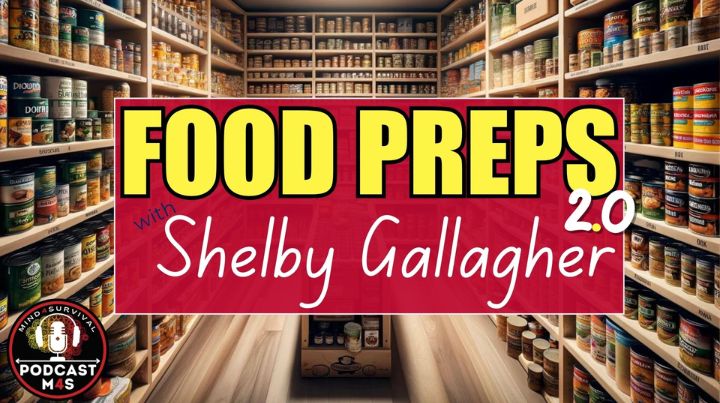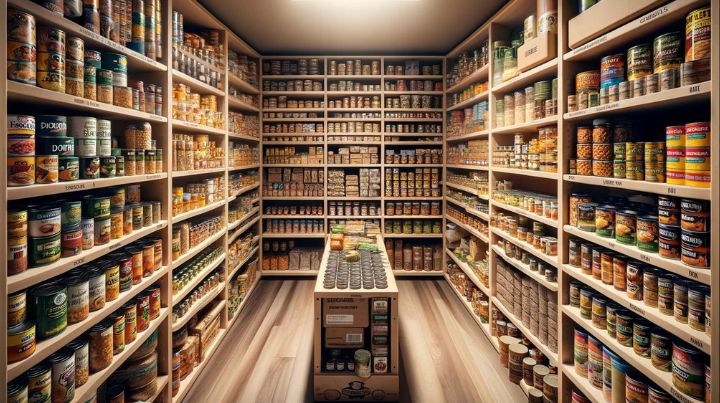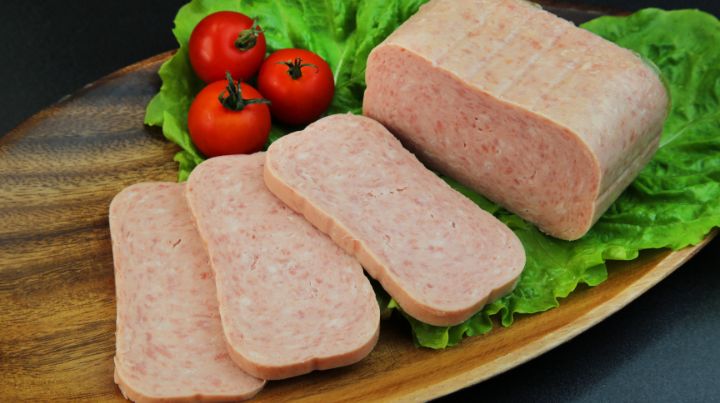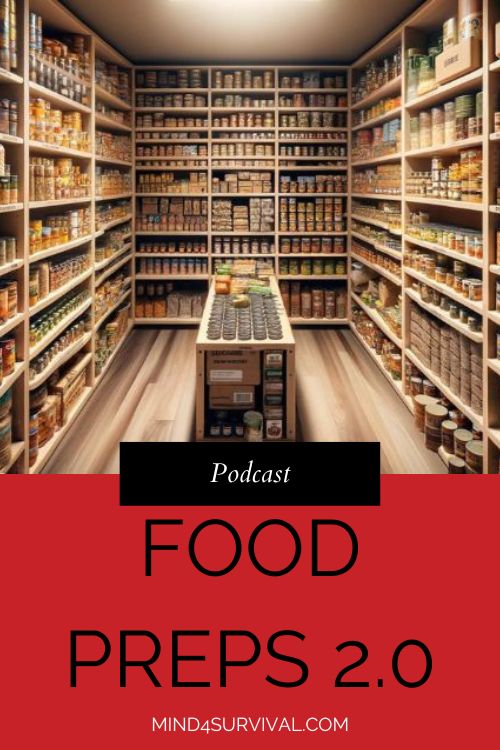Food Preps 2.0 with Shelby Gallagher


Podcast: Play in new window | Download
In today’s uncertain world, where the only constant seems to be change, being prepared for the unexpected has never been more critical. From economic downturns to political upheaval and war, there are countless reasons why having a well-stocked pantry can provide peace of mind and security for you and your family. However, navigating the challenges of rising grocery prices and building a comprehensive food stockpile can be daunting tasks. That’s why we’re here with Food Preps 2.0 author Shelby Gallagher to offer practical advice and strategies to help you make smart choices and lay the groundwork for a resilient and sustainable food-prepping plan.
The Price Hike Struggle: Making Smart Choices
In today’s unpredictable world, the rising costs of groceries can leave even the most seasoned preppers feeling the pinch. Working to build and meet your preparedness needs while dealing with the ever-fluctuating prices requires strategic thinking and discipline. One effective approach is to prioritize purchasing versatile staple items that offer the most bang for your buck. Rice, beans, oats, and pasta are excellent examples of budget-friendly foods that can be incorporated into a wide range of meals, stretching your food supply further without breaking the bank.
Moreover, keeping an eye out for sales, discounts, and bulk deals can significantly reduce your overall food expenses. Many grocery stores offer loyalty programs or special promotions that can help you save money on essential items. Additionally, exploring alternative shopping options such as farmers’ markets, co-ops, or wholesale clubs can often lead to substantial savings on fresh produce and other perishable goods. By staying flexible and open-minded in your approach to grocery shopping, you can mitigate the impact of price hikes and ensure that your pantry remains well-stocked for any eventuality.
Building Your Stockpile Bit by Bit

Building an adequate food stockpile doesn’t have to happen overnight; in fact, it’s often more manageable and sustainable to build it bit by bit over time. Start by setting achievable goals for yourself, such as adding one or two extra items to your pantry each time you go grocery shopping. This incremental approach not only spreads out the financial investment but also allows you to gradually accumulate a diverse selection of foods that will sustain you during emergencies.
Be sure to focus on prioritizing long-lasting, non-perishable items that have a high nutritional value and can be stored for extended periods without spoiling. Canned goods, dried fruits, nuts, and freeze-dried meals are all excellent options for building a robust stockpile. Additionally, don’t forget to consider your dietary preferences and any special dietary needs of your family members when selecting items for your pantry. By consistently dedicating a portion of your grocery budget to stocking up on essential items, you’ll steadily build a supply of food that provides peace of mind and security for the future.
Keep Your Food Preps Organized
Keeping your food preps organized is crucial for ensuring that your stockpile remains efficient, accessible, and easy to manage. Start by designating a dedicated storage space for your emergency supplies, whether it’s a pantry, closet, or shelving unit. Use labels to categorize and identify different types of food items, making it simple to locate what you need when you need it.
Regularly rotate your stockpile to ensure that older items are used first, reducing the risk of food waste and maintaining freshness. As you replenish your supplies, be sure to place newly purchased items behind older ones to maintain a “first in, first out” system. Additionally, periodically check expiration dates and rotate out any items that are approaching their shelf life to maintain the quality and safety of your food supply.
Consider investing in shelving units, storage bins, or pantry organizers to maximize the use of available space and keep your stockpile neat and orderly. Group similar items together, such as grains, canned goods, and spices, to streamline meal preparation and inventory management. By implementing a system for organizing your food preps, you’ll not only save time and minimize waste but also ensure that you’re always prepared for whatever challenges may arise.
Prioritize High-Value Food Items Such as Meat

When it comes to food preparedness, prioritizing high-value items like meats is essential for ensuring that you have the energy and nutrition necessary to tackle any challenges that may arise. Besides being expensive, meats are rich in protein, essential fats, and micronutrients, making them a valuable addition to your emergency food supply. Consider stocking up on canned meats such as tuna, chicken, and salmon, as well as shelf-stable options like beef jerky and dried sausage.
In addition to meats, focus on incorporating other high-calorie foods into your stockpile to provide sustained energy during emergencies. Items like nuts, seeds, nut butter, and dried fruits are nutrient-dense options that pack a powerful punch in terms of calories and essential nutrients. Additionally, don’t overlook the importance of carbohydrates for fueling your body in times of need. Staples like rice, pasta, and oats are excellent sources of complex carbohydrates that can provide long-lasting energy to keep you going when the going gets tough. By prioritizing high-value food items like meats and other calorie-dense foods, you’ll ensure that your emergency food supply is both nutritious and capable of sustaining you through any situation.
The Task is Simple: Just Start
Starting on your food-prepping journey doesn’t require perfection or an extensive stockpile right from the get-go. The most important step is taking that initial leap and getting the ball rolling. Start small, with whatever resources and budget you have available, and gradually expand your preparations as you learn and grow.
Remember, every small step you take towards preparedness is a step in the right direction. Begin by assessing your current pantry and identifying areas where you can improve or add to your emergency food supplies. Start incorporating extra non-perishable items into your grocery shopping trips, setting aside a portion of your budget specifically for prepping purposes.
The Bottom Line on Food Preps 2.0
Food preparedness is not about achieving perfection or having everything in place all at once; it’s about taking that first step and committing to the journey. By prioritizing versatile staple items, building your stockpile incrementally, keeping your supplies organized, and prioritizing high-value foods like meats, you’ll be well-equipped to weather whatever challenges may come your way. So, don’t wait for the perfect moment—start prepping today. Remember, every small effort adds up, and by investing in your preparedness now, you’re investing in a more secure and resilient future for yourself and your loved ones.
What food prep strategies have worked best for you? Tell us in the comments below.
Additional Resources:
- Top Prepping Tips! (Step-By-Step Survival Guide)
- Food Preservation: Fermentation
- Food Forest Abundance: Self-Reliance Success with Jim Gale
- S.O.S. Rations Emergency 3600 Calorie Food Bar (Cinnamon + Coconut, 2 Pack)
Stay safe,






Join Mind4Survival!
Stay informed by joining the Mind4Survival! 100% Secure! 0% Spam!
Follow Us!
Affiliate Disclosure
Mind4Survival is a free, reader-supported information resource. If you make a purchase through our link, we may, at no cost to you, receive an affiliate commission.


